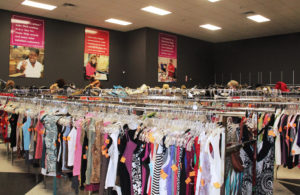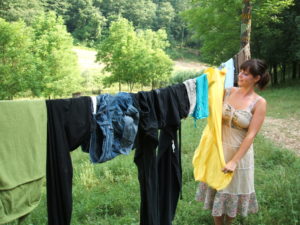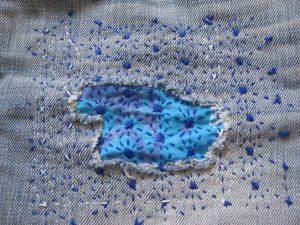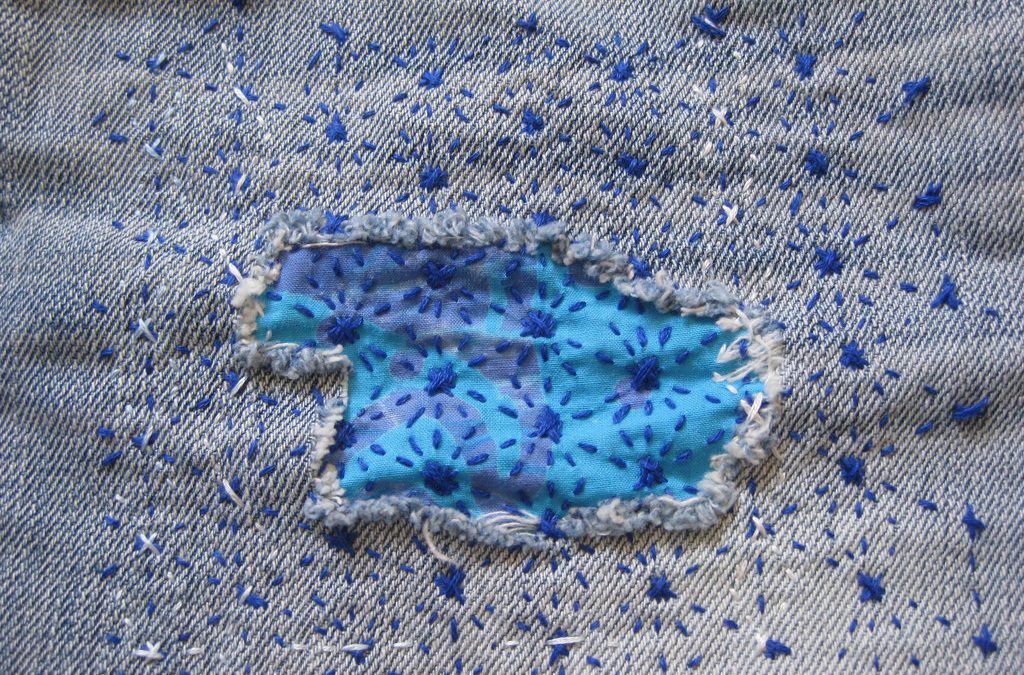Textiles: Rethink, Reduce, and Reuse
Did you know? If you’re an average North American, you’ll throw out 81lbs of textile waste (shoes, sheets, blankets, coats, underwear, clothing, etc) every single year! Our landfills are filling up faster than ever, and consumption is a national pastime, yet fashion is one of the single most polluting industries on Earth. The good news is, there’s lots YOU can do about it! As always, we’re talking Rethink, Reduce, Reuse, and Recycle.
Rethink:
The simplest step you can take is to simply buy less. Too often we buy things on impulse that are wants rather than needs. Here’s a couple tips to help break the cycle:
- If you see something you love, walk away. If it’s important to get, you can come back a few days later.
- Go home and check your wardrobe. Maybe you already have something to fill that category. Give it a bit of love: wash, iron, or mend as needed and it’ll feel like new!
- Try keeping a list of items you need, so when you’re out and about, you can focus on looking for those true needs instead of grabbing wants.
Reduce:
Once you’ve decided that you really do need an item, you can reduce the impact of it by buying carefully. And no, this isn’t just for the rich: the used-clothing market is hotter than ever, and cheap! Here’s a few ways to reduce your clothing’s impact:

Thrift stores aren’t so dingy anymore!
- Buy used: thrift stores, physical or online consignment stores, and clothing swaps are a budget-friendly way to repurpose an item that somebody else no longer loves.
- Choose quality over quantity: it’s been said before, but it’s worth saying again. Quality really DOES last longer, as long as you wear it out, and can save you money in the long run too.
- Look for environmental certifications like fair trade, certified organic, or bluesign
- Consider the ethics of the company that produced the item, and where it was made
- Learn: “Overdressed: The High Cost of Fast Fashion” and “The True Cost” are a book and documentary respectively that cover many of the issues with the fashion industry
- Try a challenge: Project 333 or a Buy Nothing Year (or even month!) can be a great way to “re-set” your buying habits
Reuse:
By maximizing the useful life of your textiles, you can reduce your need to buy new items while tossing the old! How can you make your clothing last longer? Here’s some ideas:
- Read the care label, and actually follow it!
- Wash in cold (or colder) water – hot water can be damaging to your clothing, especially clothing with elastic, plus it uses a lot of energy to heat the water up.
- Hang to dry: dryers wear out your clothing quickly! In winter or if you don’t have access to outside, a foldable drying rack can hold a surprising amount of clothing. If you can, hang outside, as sunshine can bleach out stains and leaves the clothes smelling amazing!
- Remove stains. Too often a spot can defeat us and lead to the retirement of a formerly-loved item. This resource from the American Cleaning Institute has a comprehensive list of stain-removal techniques for any substance you can imagine!
- Mend & Patch. If you haven’t learned how, now’s the time! A simple sewing kit isn’t expensive, and a small darn or patch can totally revitalize your garments. The newest trend is the “visible mend” so you can really get creative with embroidery and colourful patches! Not the DIY type? Tailoring is still going strong, and paying for a fix is typically cheaper than buying a new item.

A beautiful example of the “visible mend”, Japanese-style. There, it’s called sashiko!
Don’t miss Part Two: How to Recycle Your Clothing! (because sometimes rethink, reduce, and reuse just won’t cut it).




I have several pairs of jeans, socks including wool ones and three leather jackets that are ripped. I only want to recycle them in Winnipeg. Can you please assist? Thanks
Great to see this being discussed! Our organization, Pembina Fibreshed, launched recently to support and promote sustainable local fibre production, from sheep farming to weaving and knitting to small scale mills and manufacturing. We will be offering workshops to share the skills and knowledge needed so that people can reduce their wardrobe carbon footprint and support the local economy. Our goal is to create the same awareness of and enthusiasm for local fibre as people now have for local food.